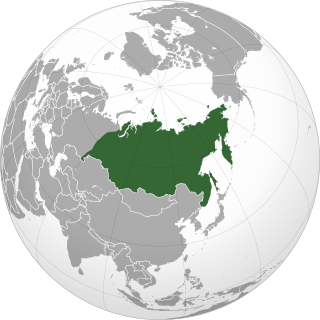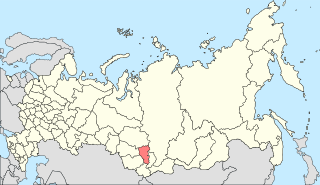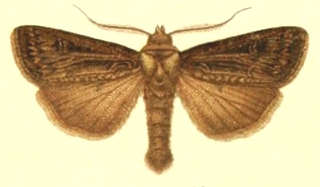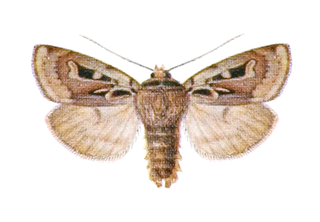
Russia is the largest country in the world, covering over 17,125,192 km2 (6,612,074 sq mi), and encompassing more than one-eighth of Earth's inhabited land area. Russia extends across eleven time zones, and has the most borders of any country in the world, with sixteen sovereign nations.

Siberia is an extensive geographical region comprising all of North Asia, from the Ural Mountains in the west to the Pacific Ocean in the east. It has formed part of the sovereign territory of Russia and its various predecessor states since the centuries-long conquest of Siberia, which began with the fall of the Khanate of Sibir in the late 16th century and concluded with the annexation of Chukotka in 1778. Siberia is vast and sparsely populated, covering an area of over 13.1 million square kilometres (5,100,000 sq mi), but home to only one-fifth of Russia's population. Novosibirsk and Omsk are the largest cities in the area.


North Asia or Northern Asia, also referred to as Siberia, is the northern region of Asia, which is defined in geographical terms and is coextensive with the Asian part of Russia, and consists of three federal districts of Russia: Ural, Siberian, and the Far Eastern. North Asia is bordered by the Arctic Ocean to its north; by Eastern Europe to its west; by Central and East Asia to its south; and by the Pacific Ocean and North America to its east. It covers an area of 13,100,000 square kilometres (5,100,000 sq mi), or 8.8% of Earth's total land area; and is the largest subregion of Asia by area, but is also the least populated, with a population of around 37 million, accounting for merely 0.74% of Asia's population.

The Central Siberian Plateau is a vast mountainous area in Siberia, one of the Great Russian Regions.

A forest steppe is a temperate-climate ecotone and habitat type composed of grassland interspersed with areas of woodland or forest.

The following outline is provided as an overview of and topical guide to Russia.

South Central Siberia is a geographical region north of the point where Russia, China, Kazakhstan and Mongolia come together.

Agrotis ruta is a moth of the family Noctuidae first described by Eduard Friedrich Eversmann in 1851. It has a Holarctic distribution. In North America it has a northern distribution, occurring from Alaska and the Yukon Territory to Labrador, south to northern Manitoba and British Columbia, and in the Rocky Mountains to southern Alberta. Furthermore, it can be found in the northern Urals, Siberia, Mongolia, China and Japan.

Blepharita amica is a moth of the family Noctuidae. It is found from northern Europe to the Russian plain, the Ural, Siberia, the Amur Oblast, Primorye Region and Kazakhstan. It has also been recorded from the Korean Peninsula, Japan and north-eastern China.

Agrotis trifurca is a moth of the family Noctuidae. It is found in Turkestan, Siberia, south-eastern Ukraine, the Altai Mountains, Tibet, China, Mongolia, the Amur region and the Korean Peninsula. It is also found in the eastern Carpathian Mountains in Romania.

Xestia wockei is a moth of the family Noctuidae. It is known from Siberia and northern North America, including Quebec, Newfoundland and Labrador, the Northwest Territories and Yukon.

The North Siberian Lowland, also known as Taymyr Lowland, is a plain with a relatively flat relief separating the Byrranga Mountains of the Taymyr Peninsula in the north from the Central Siberian Plateau in the south. To the southeast of the Olenyok basin the lowland merges with the Central Yakutian Lowland.
Turano-Mongolian cattle are a group of taurine cattle that are found in Northern and Eastern Asia. They are morphologically and genetically distinct from the Near-Eastern group of taurine cattle, from which European cattle are descended; they may have been domesticated independently.

The Vilyuy Plateau is a mountain plateau in Krasnoyarsk Krai and the Sakha Republic (Yakutia), Siberia, Russia. It is a part of the Central Siberian Plateau and it is made up mainly of the upper course section of the Vilyuy River.

The Central Yakutian Lowland or Central Yakutian Lowlands, also known as Central Yakut Plain or Vilyuy Lowland, is a low alluvial plain in Siberia, Russia.

The South Siberian Mountains are one of the largest mountain systems of the Russian Federation. The total area of the system of mountain ranges is more than 1.5 million km². The South Siberian Mountains are located in the Siberian and Far Eastern Federal Districts of Russia, as well as partly in Mongolia. The territory of the mountain system is one of the Great Russian Regions.

The East Siberian Mountains or East Siberian Highlands are one of the largest mountain systems of the Russian Federation. They are located between the Central Yakutian Lowland and the Bering Strait in Northeast Siberia. The area of the East Siberian Mountains has a very low population density. The territory of the mountain system is one of the Great Russian Regions.

The Great Russian Regions are eight geomorphological areas in the Russian Federation displaying characteristic forms of relief. Seven of them are east of the Urals.



















